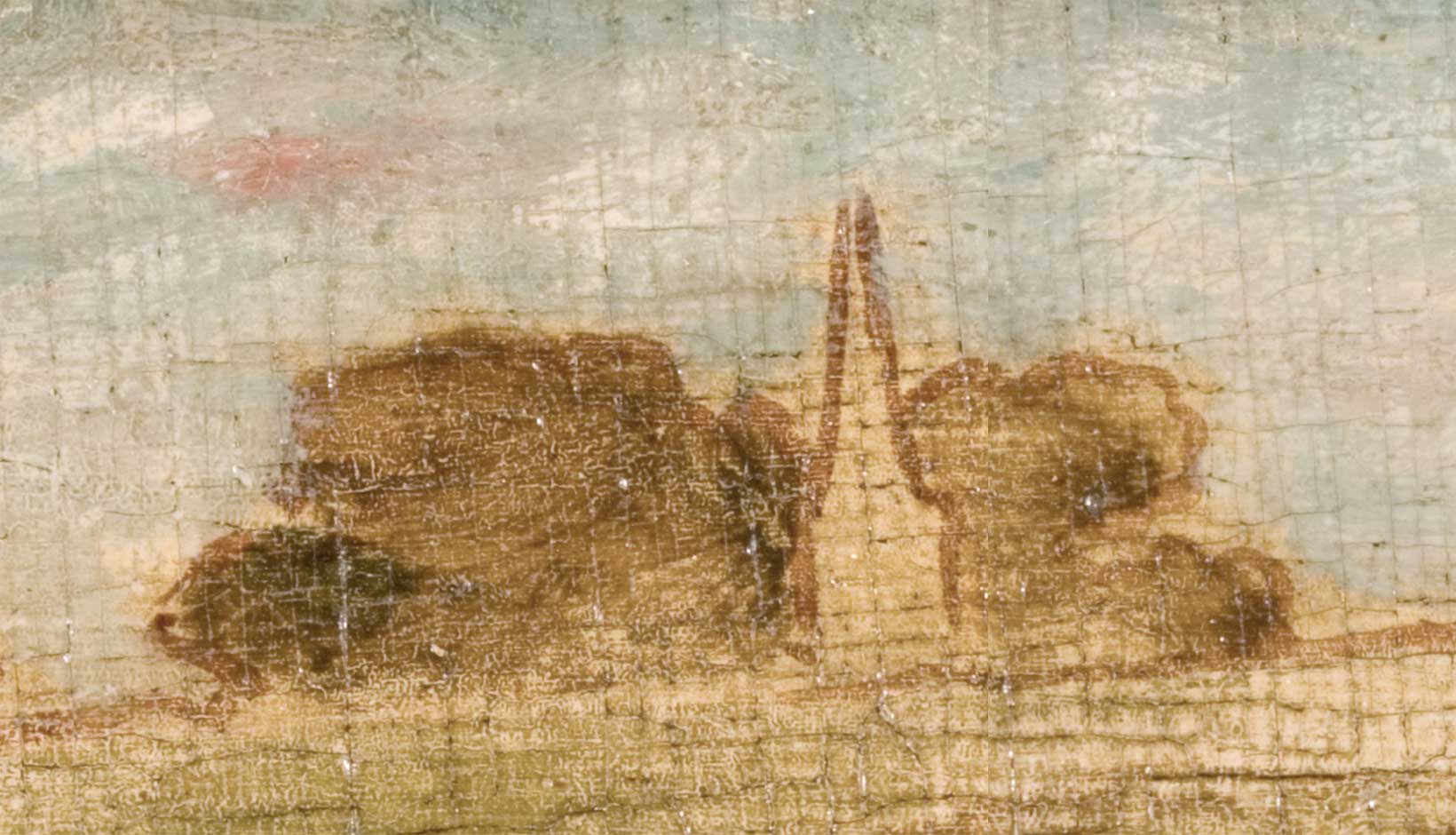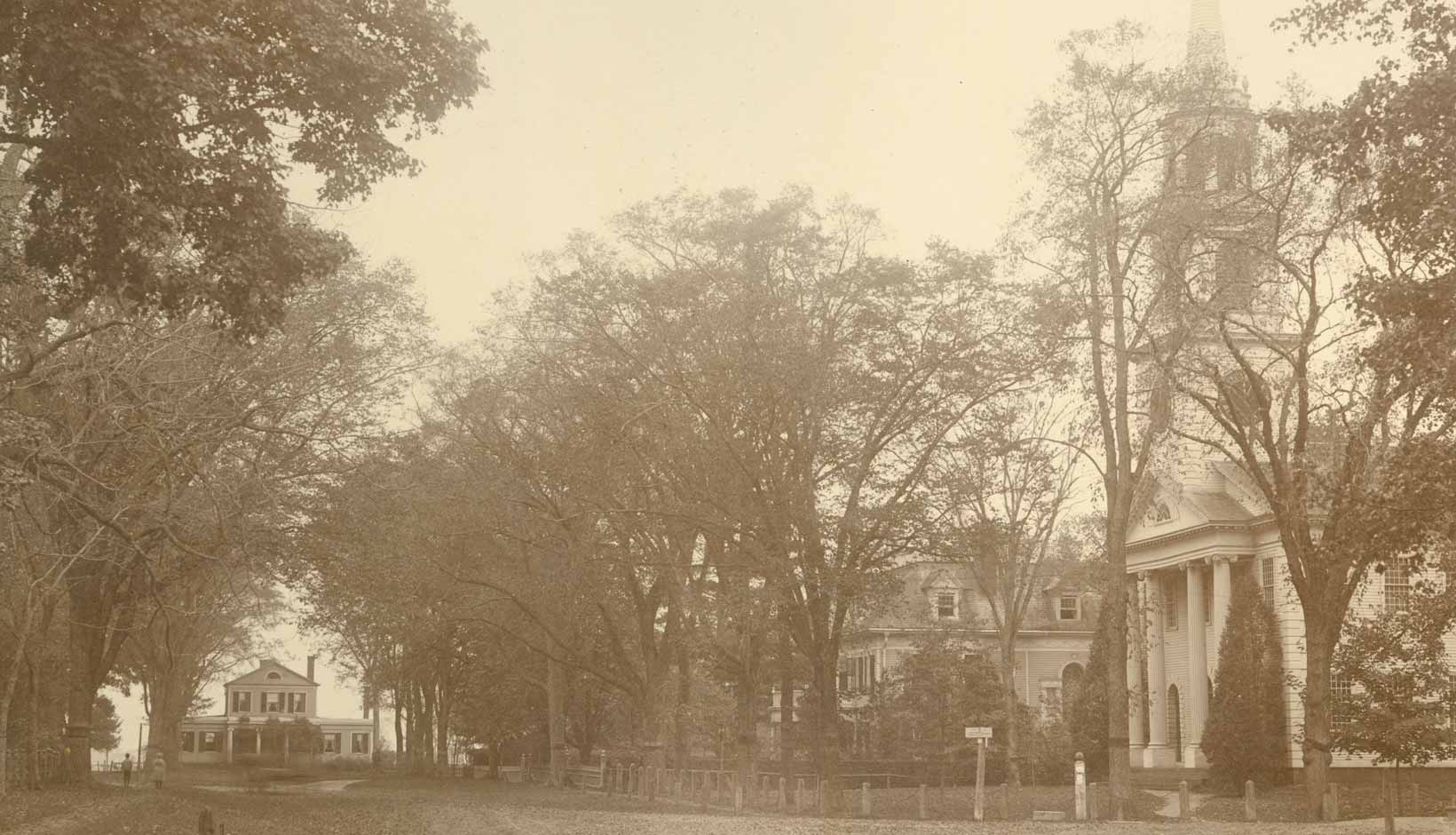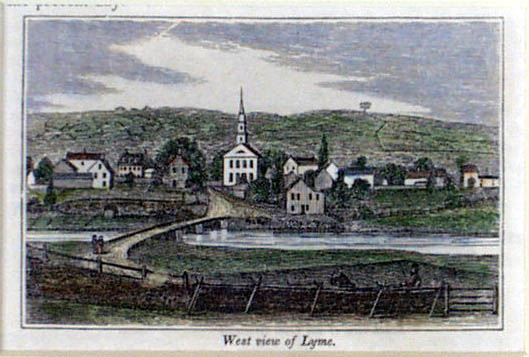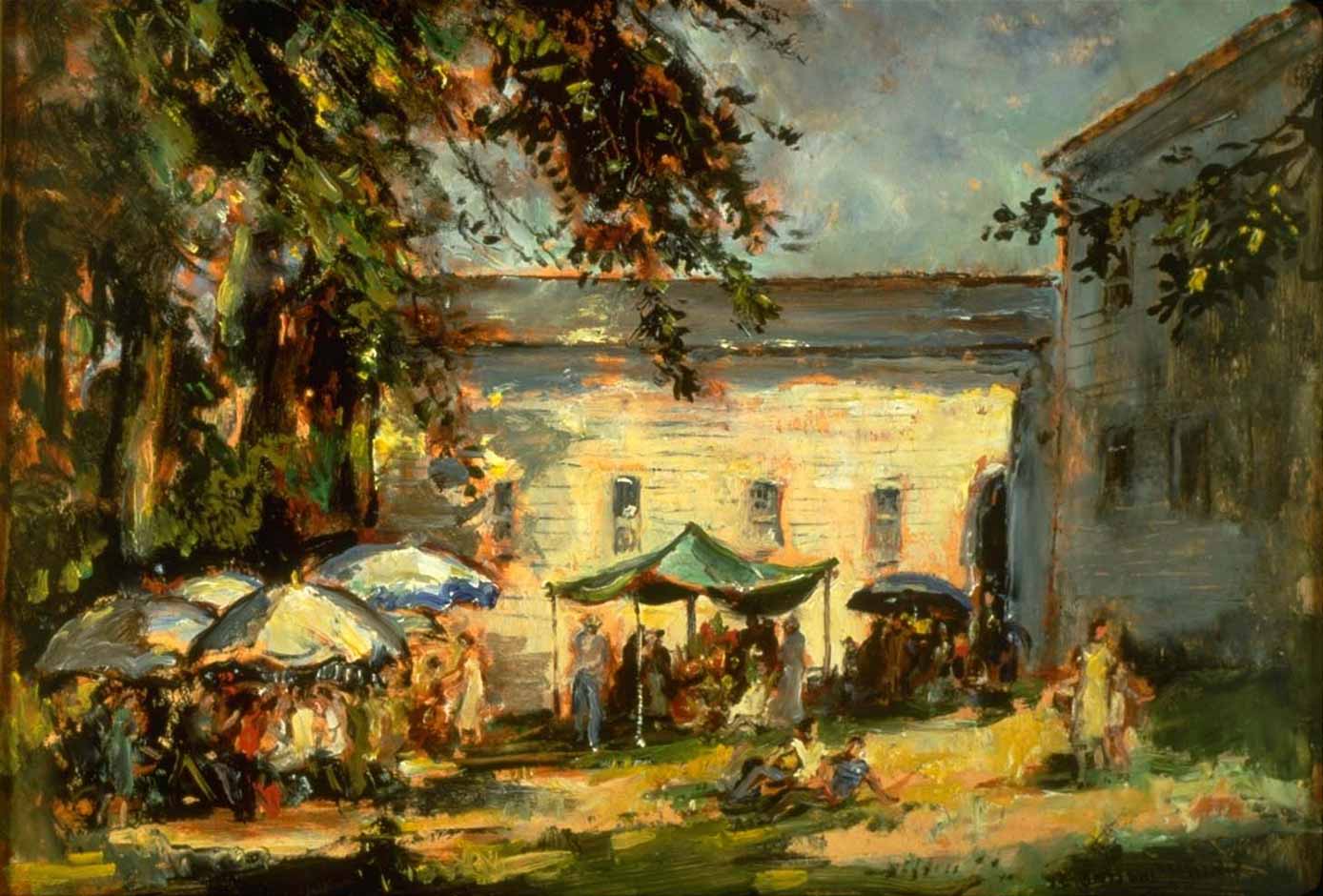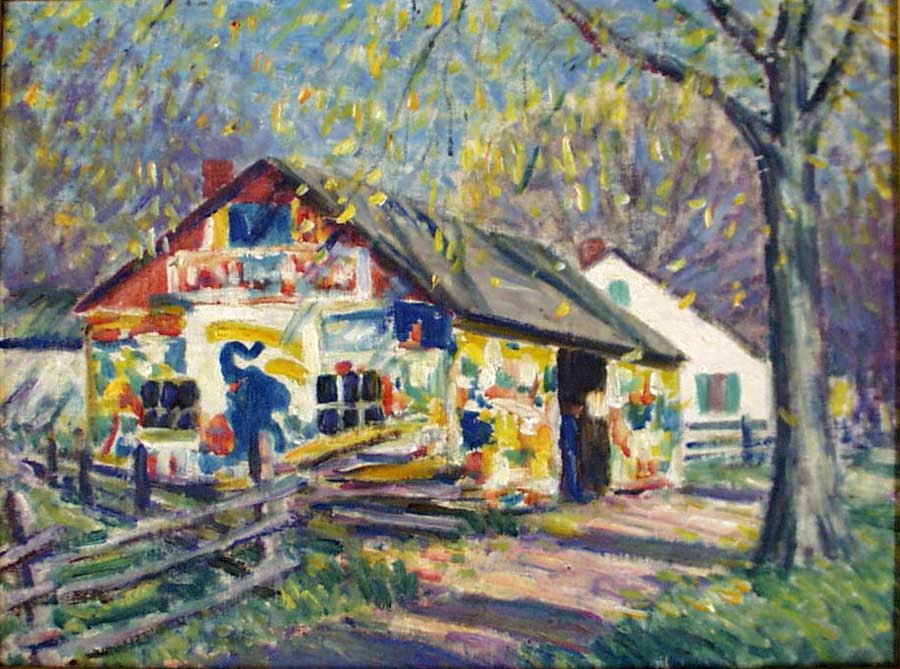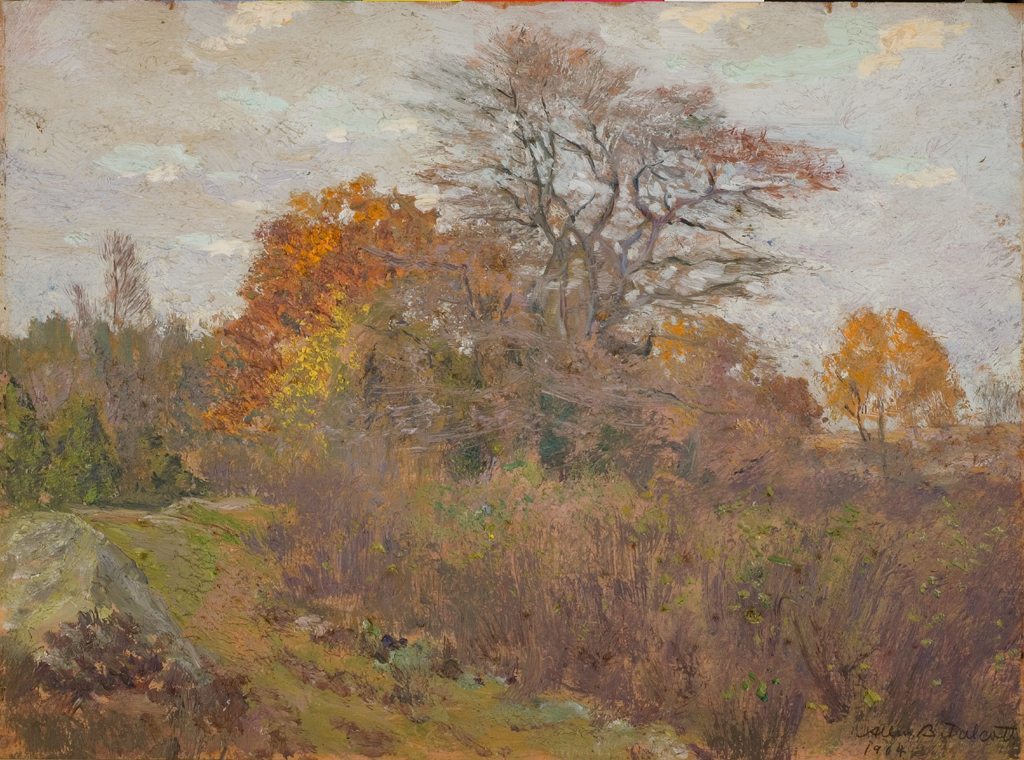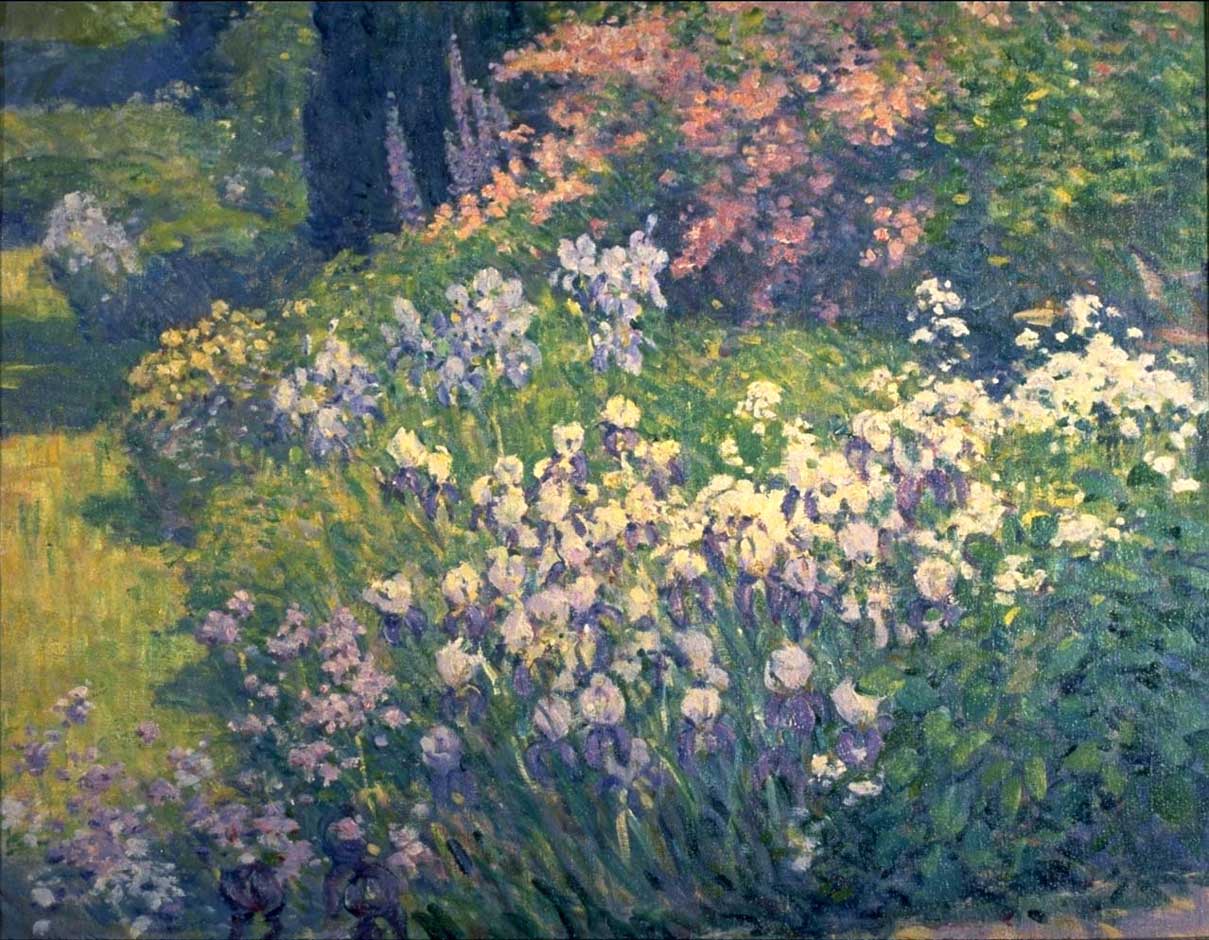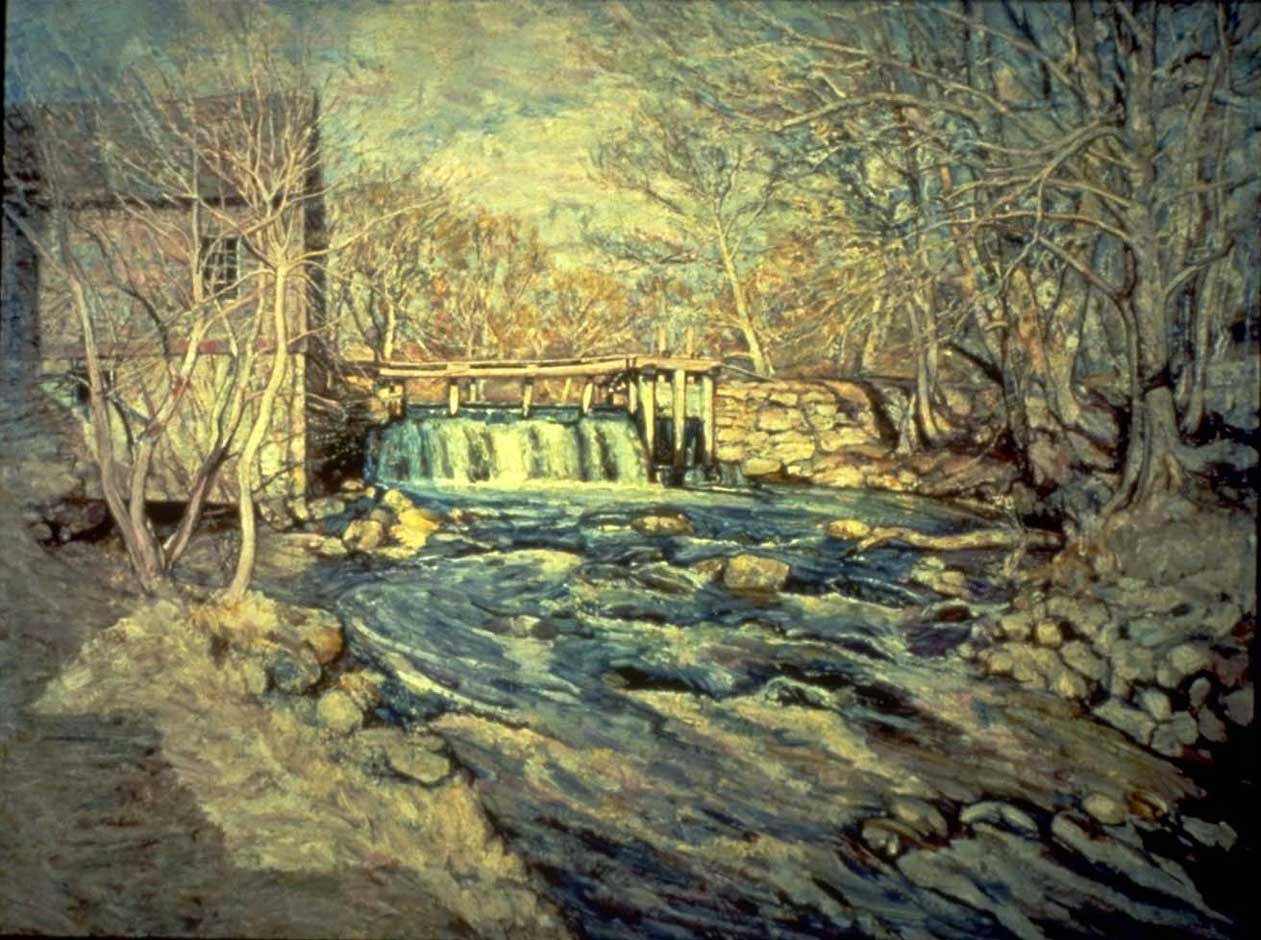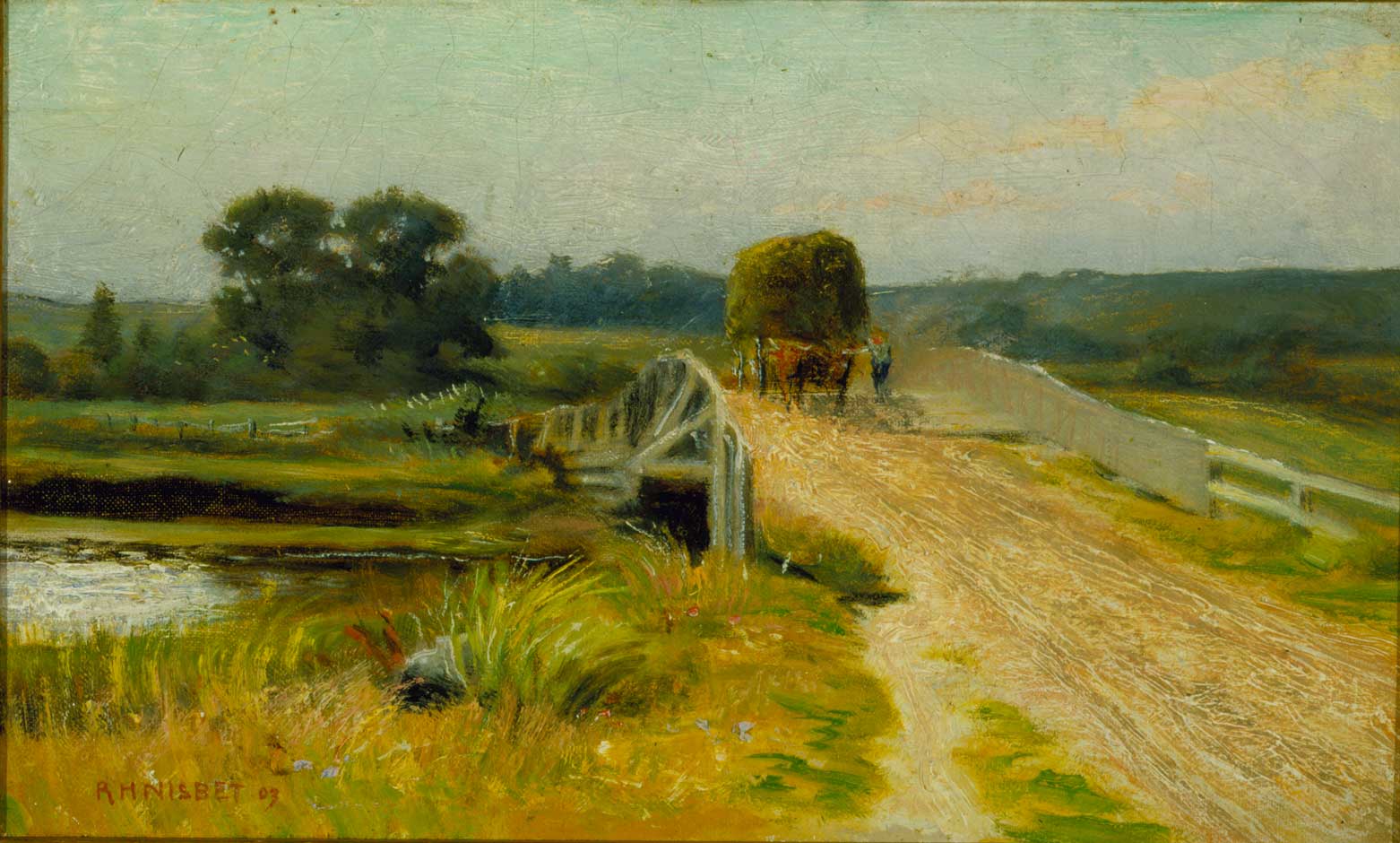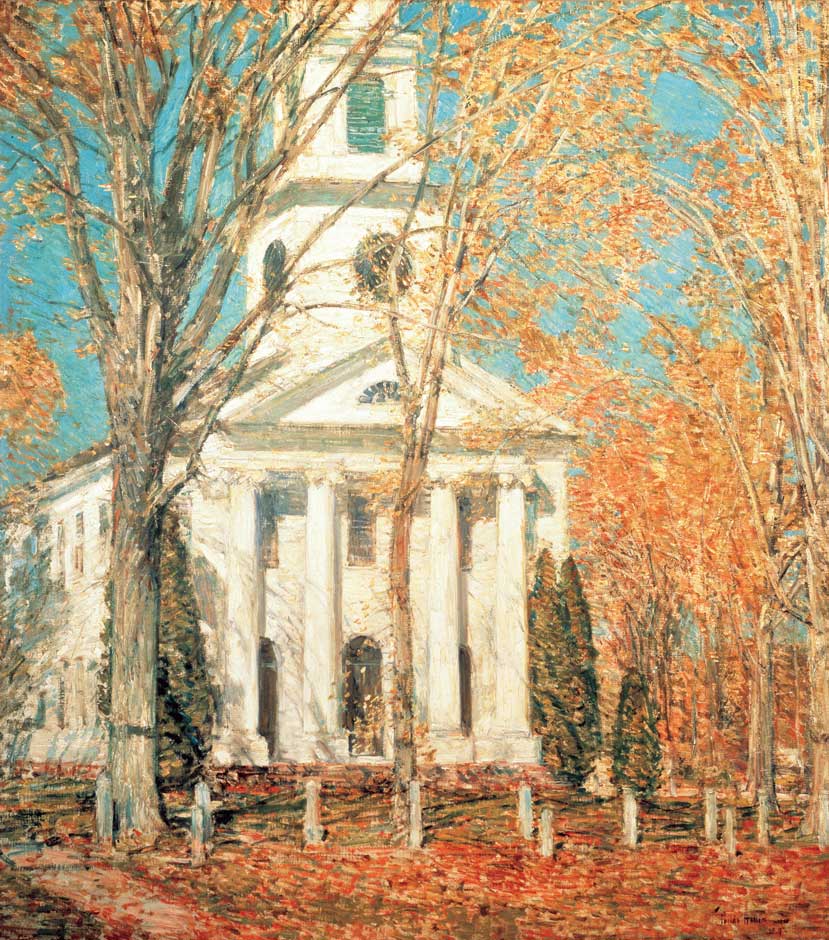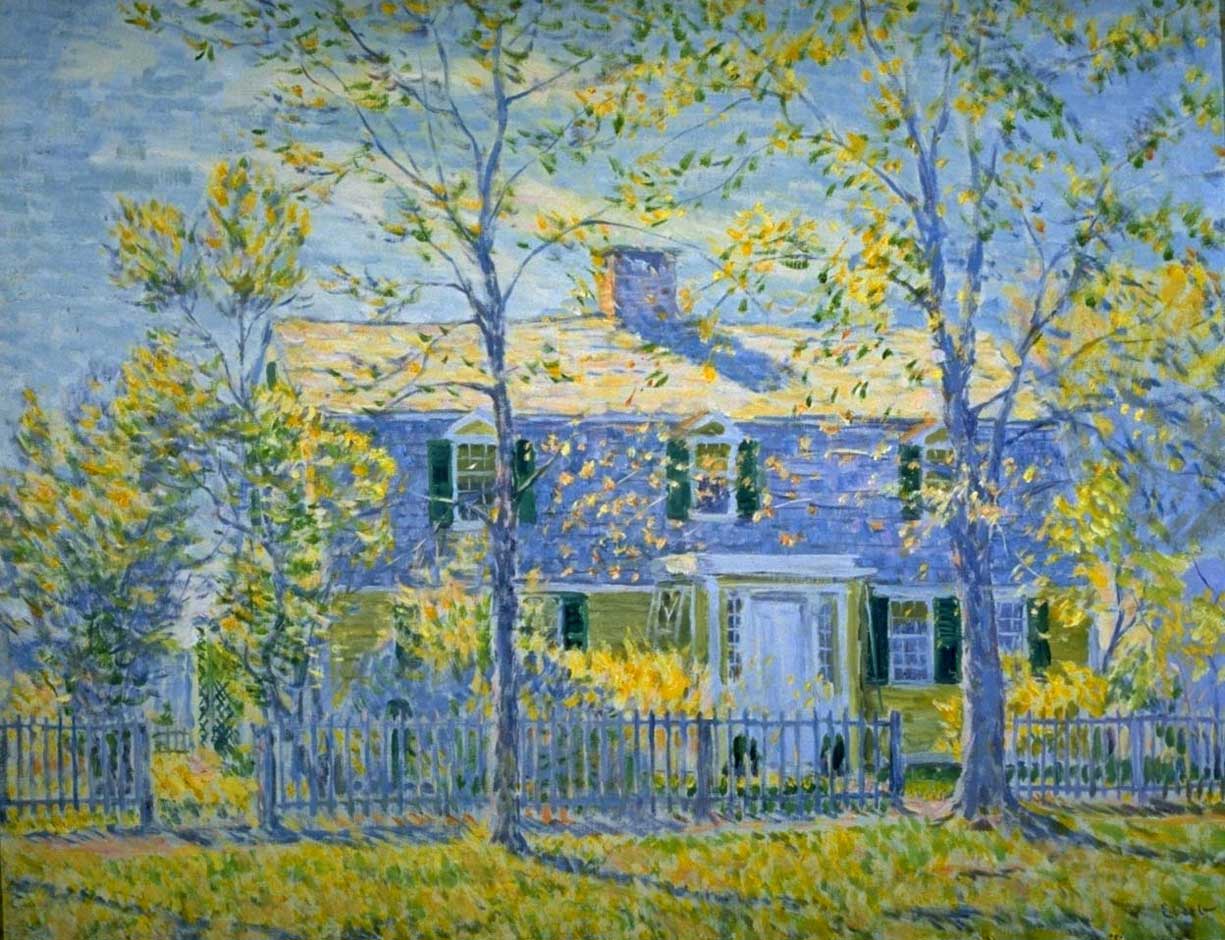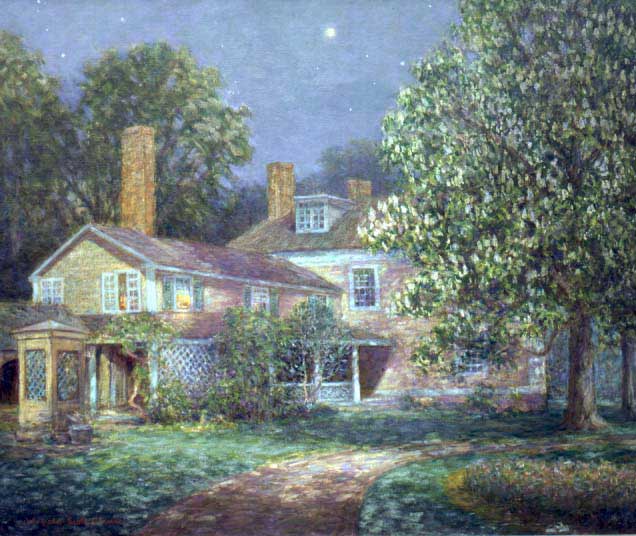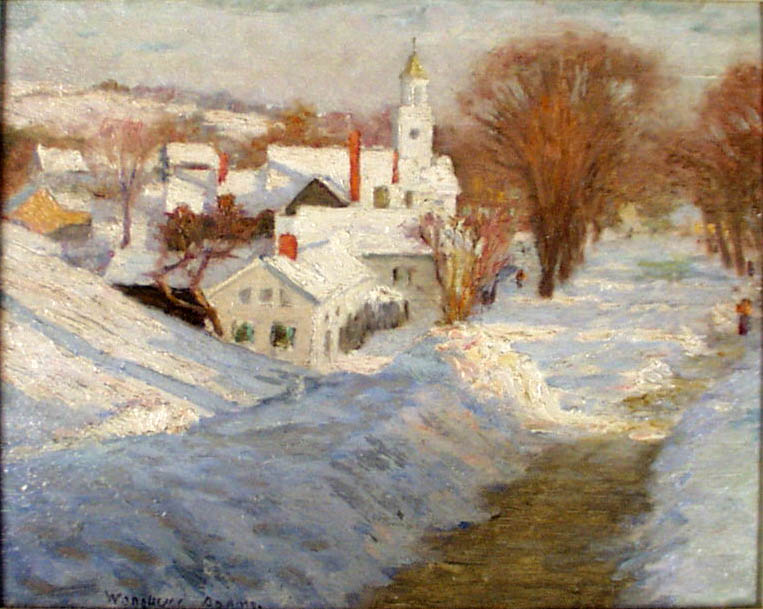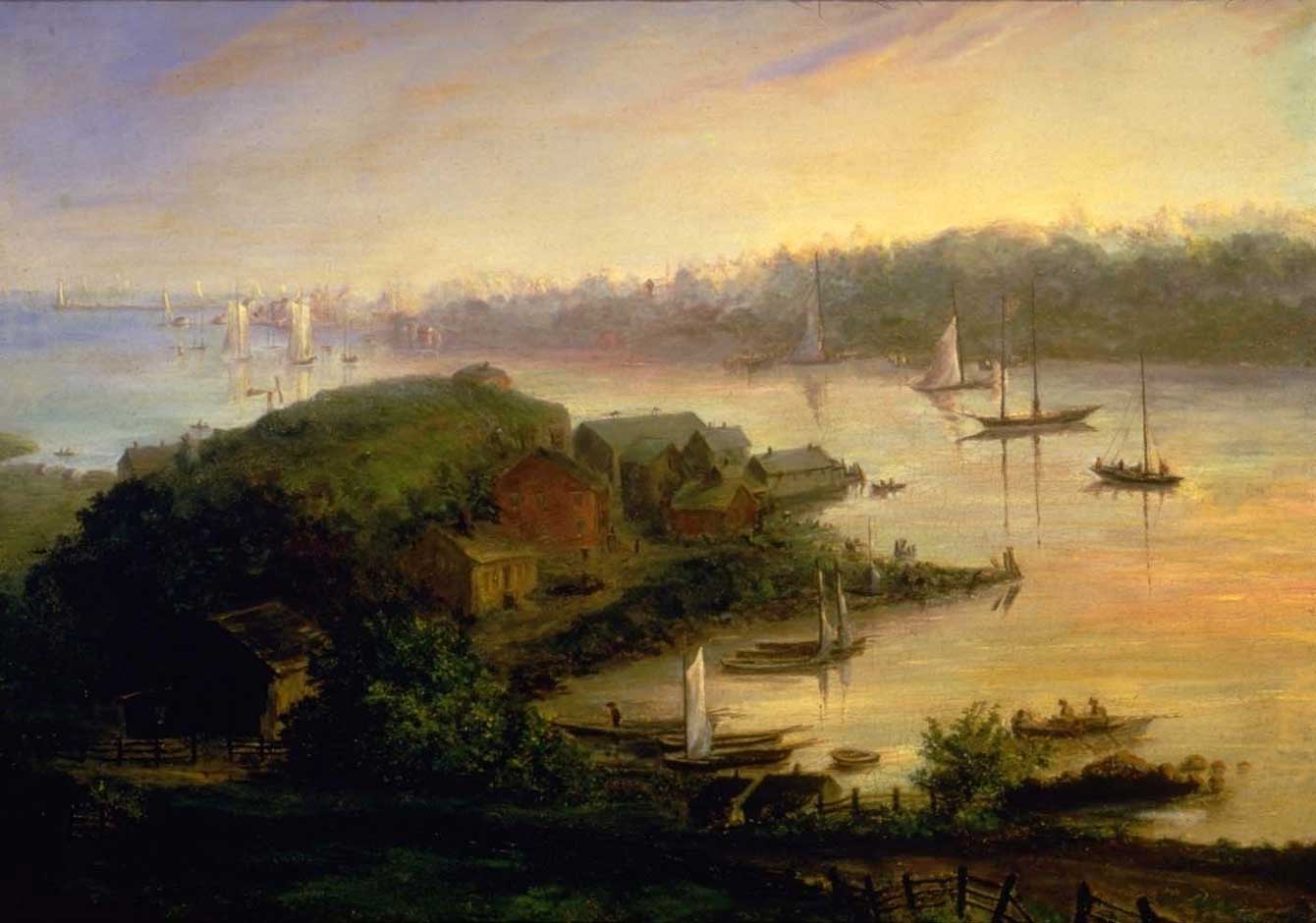Fox Chase
The Village of Old Lyme
- The Museum will be closed Sunday, April 9 in observance of Easter.
The Fox Chase contains two key landmarks of the village of Old Lyme.
The Griswold House at the north end of the town and the Congregational Church nearer the south. Beyond the church the town grows less dense before giving way to the marshes along the banks of the winding rivers or sandy shore along Long Island Sound. The two are linked by “The Street” which is now referred to as Lyme Street. The village of Old Lyme is not much more than one long street with a few smaller side streets. “But such a street!” one observer exclaimed in 1915.
Originally the main street was overhung with a double row of elms and sycamores that offered a gothic-arched canopy to those who drove or walked the street. During the years between the American Revolution and the 1820s, shipbuilding and commerce brought a great deal of wealth to the town. Young men came to town and found work in the many shipyards, mills, lumberyards, and warehouses along the river. In 1810, Lyme was more populated than the city of New London—primarily with young single men over the age of 25.
With the boom, sea captains and business owners built beautiful homes along the main street of the town. However, changes in the shipping industry as the technology turned from wind-power to steam, as well as the impact of the Civil War, diminished the need for such a workforce, and by the end of the century the population had gone down by more than half. The town became quiet and many of the surrounding farmhouses were left to fall into a state of disrepair and decline.
When Miss Florence opened her home as a boardinghouse for artists, its faded glory was part of the appeal. Arthur Heming writes, “Against the mildewy and tattered wallpaper of forty years old design, hung by heavy cords and tassels, were a number of ancestral portraits—for her relations included Governors of States and Chief Justices of the Supreme Court—and minutely painted pictures of clipper ships that had sailed the wintry seas between Lyme and London, England before the days of steam.” Indeed, many of the artists left New York in search of just such a place steeped in history.

After the 1876 Centennial Exposition in Philadelphia, which celebrated the founding of this country, Americans, and particularly New Englanders, became captivated with the nation’s Colonial legacy. The late 19th century was a time of dramatic urban and industrial development, with new populations flooding New York from Europe. Noise and air pollution became commonplace. The health of city dwellers and the welfare of working children became national issues. Americans began to look to the nation’s past to find comfort from the anxieties of a rapidly changing world. The Colonial Revival movement, with it roots in the traditions of New England, impacted architecture as well as fine and decorative arts of this era. The artists were drawn to Old Lyme, which seemed directly connected to the nation’s past, because of its historic and rural character. Once there they made paintings of New England icons, such as the Colonial-era homes along Lyme Street, including Miss Florence’s boardinghouse. They also painted the Congregational Church, the charming Bow Bridge, the rustic mills, old-fashioned gardens and ancient trees, often during the colorful New England fall.
In the end, Miss Florence summed up the town’s transformation when she said, “So you see, at first the artists adopted Lyme, then Lyme adopted the artists, and now, today, Lyme and art are synonymous.”
The annual summer exhibitions in Old Lyme were filled with local scenes that appealed to collectors, who found solace in these images as nostalgic emblems of a simpler time. Reviews of the exhibitions appeared in New York and Boston papers, enticing waves of tourists to drive to Old Lyme. They would enjoy the local hospitality of a tea on the lawn of the Art Association and would stop in to view the painted panels in the Griswold House next door. In the end, Miss Florence summed up the town’s transformation when she said, “So you see, at first the artists adopted Lyme, then Lyme adopted the artists, and now, today, Lyme and art are synonymous.” Today, in addition to the Florence Griswold Museum, the town is home to several esteemed art institutions such as the Lyme Art Association and the Lyme Academy College of Fine Arts.

